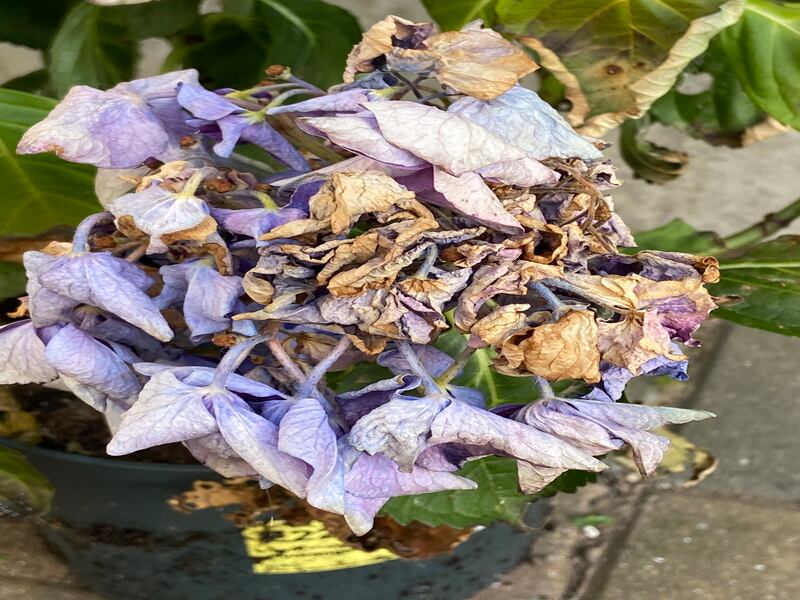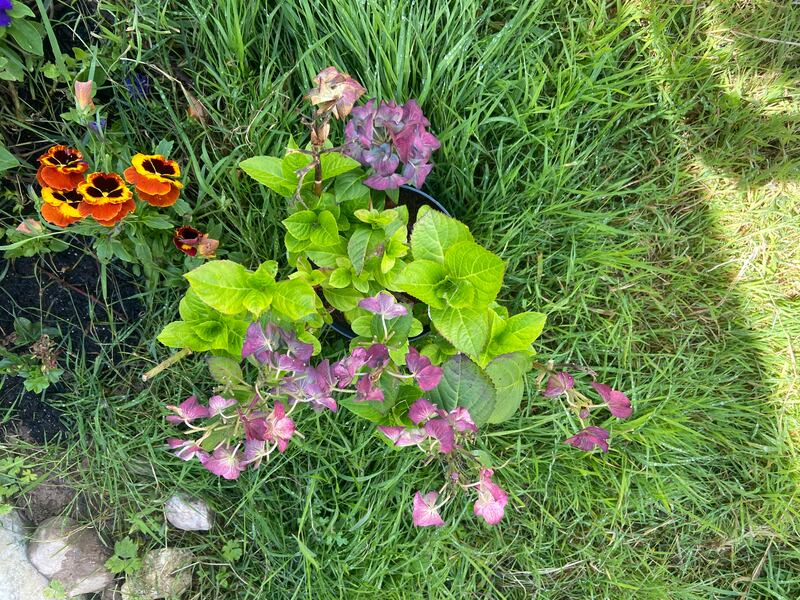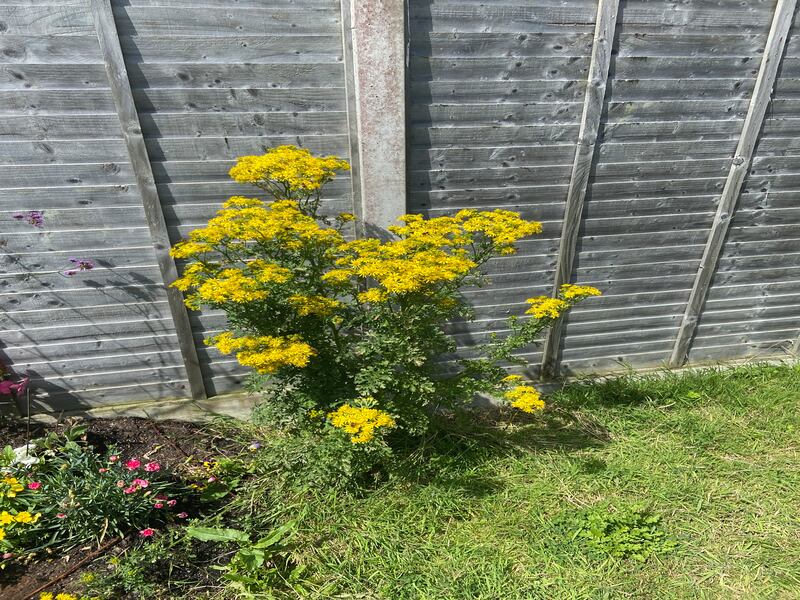I have killed, and almost killed, several plants since I last wrote about my garden. It was to be expected, really. Everything was going far too well. First, the hydrangea got scorched when I was on holidays, then the centaurea croaked for no apparent reason, and the aquilegia stopped flowering.


Luckily, I had kept the Hydrangea in the pot, so I was able to move it to the shade. I left it there for two weeks but it still looked fairly pathetic, so I decided to do what any novice gardener who hasn’t a clue will do – I lopped off all the dead flowers and scorched leaves and hoped for the best. Gardening, I reasoned, is a bit like dealing with a break-up. You get a mad haircut or colour, which hitherto you had no intention of doing, though you tell everyone you had always wanted to go for it, and you pray it works/heals your broken heart.
Did it fix my ailing hydrangea? The leaves bounced back fairly well, but the flowers haven’t come back as strongly and they have changed colour, becoming more pink than blue. This happens in hydrangeas when the acidity of the soil changes. But just like a heartbreak, I’m hoping time will heal all – otherwise that’s €22 wasted.

[ New beginnings: I am far from the earth goddess I imaginedOpens in new window ]
The poor centaurea didn’t stand much of a chance after I moved the hydrangea because the flower bed was a favourite of the neighbourhood cats. Yes, they are still a mighty foe in my gardening adventure. After watching the plant deteriorate for a few weeks, I went for the heartbreak special again and chopped the centaurea right back with the ruthless fervour of the rejected. It hasn’t exactly rallied, but I don’t think it has got any worse. So that’s something.

When the aquilegia stopped flowering at the end of June, I panicked, thinking I had murdered another plant, but thankfully the flowering period of these plants is as short-lived as a teenage fling. I have decided to leave it to self-seed instead of cutting it back. My mam did that with hers and it adds early colour to her garden after a long winter – an early indicator that summer is on its way. I’m looking forward to seeing its starlike blooms again.
The ragwort is staying and I actually quite like it. Its yellow flowers clump together in bunches reaching up high towards the sun
I have two recent additions to the flower beds – Dipladenia (rocktrumpet) and ragwort. One was gifted, and the other turned up of its own accord. The rocktrumpet is a climbing plant and fits nicely in where the hydrangea used to be. Its vibrant pink flowers are slowly climbing up the trellis I found in Homebase for €17. A trellis is not necessary, as gardening stakes will also help keep it upright.

The other new addition is one that some gardeners would consider a weed and remove, but bees and other pollinators (such as bluebottles) love it. Indeed they seem to favour it over the other pollinator-friendly plants I chose, like salvia and fuchsia. So the ragwort is staying and I actually quite like it. Its yellow flowers clump together in bunches reaching up high towards the sun.

Meanwhile, the Vervain (verbena) has taken off and is encroaching upon the flowers around it. I have tied some of it to the trellis but I think it might need some more management.
The violas I planted in the two beds are also thriving, spreading out over the flower beds and stealing some of the space meant for the pansies. It looks like they aren’t getting enough light, due to being partially shaded in one bed and the slightly overbearing verbena in the other. My plan is to separate them when they stop flowering.
If is sounds like I’m complaining, I’m not. I am trying to convey the sense of stillness and energy you must have to cultivate a garden
I have also added some herbs to my garden; basil, coriander, parsley and sage. They were €3 each in Ardkeen stores in Waterford. I also bought some thyme and rosemary seeds in Homebase that I plan to sow in the autumn. I thought I was cheating by buying plants, but I think I’ve already killed the coriander so I might have to try again with some seeds. Admittedly I got too enthusiastic with the secateurs again – the leaves were quite droopy and yellow. However, the bare stalks now look accusingly in at me, as the plant sits beside the blooming basil on my window sill.
The plan is to get two planters and put the herbs that like drier soil together (thyme, rosemary and sage), and to do the same with the moisture-loving herbs (basil, parsley and mint). Coriander likes moisture but its roots like to spread out, so I plan to move it to a bigger pot. That is, of course, if is not dead, which is highly likely at this stage.
[ New beginnings: How to start a gardenOpens in new window ]
Gardening seems like a test of patience and an unending experiment. What happens if I put a particular plant here – will it grow well beside some other plant? Is the soil too dry, is it getting enough shade? Waiting for new blooms to open, waiting for the rain to stop, waiting for it to rain – there’s always something to do. If is sounds like I’m complaining, I’m not. I am trying to convey the sense of stillness and energy you must have to cultivate a garden.
Patience and stillness are required to discover what each plant needs so they can thrive in your garden, but you also need energy and a willingness to try things out and change things around if your first attempts fail. It is a journey.





